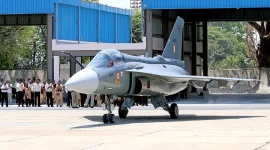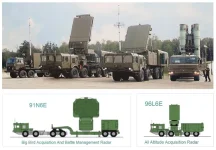- Views: 3K
- Replies: 14
In a major step forward for India's indigenous military aviation sector, Hindustan Aeronautics Limited (HAL) is set to deliver the first Tejas Mk-1A fighter jet from its new production facility in Nashik by the end of June 2025. This delivery marks a critical milestone in accelerating the supply of advanced combat aircraft to the Indian Air Force (IAF).
The Nashik facility is HAL's third production line for the Tejas, established to supplement the two existing lines in Bengaluru. This expansion is part of a strategic effort to increase the overall production rate of the Light Combat Aircraft (LCA).
The IAF, which finalised a contract worth approximately Rs 48,000 crore in February 2021 for 83 Tejas Mk-1A jets, has been keenly awaiting these deliveries to modernise its fleet.
The programme has faced setbacks, notably a delay of over a year caused by disruptions in the supply of F404 engines from the US-based company GE Aerospace. The original deadline for the first aircraft was March 31, 2024.
With engine deliveries now resuming, the Nashik facility, which can produce up to eight aircraft per year, will be crucial in overcoming these delays. Combined with the Bengaluru lines, HAL is aiming for a total annual output of 16 to 24 aircraft.
The Tejas Mk-1A is a significantly upgraded version of the original Tejas fighter. It boasts advanced features including an Active Electronically Scanned Array (AESA) radar, a modern electronic warfare suite for enhanced survivability, and the capability to be armed with sophisticated beyond-visual-range missiles like the indigenous Astra.
These upgrades make the Tejas Mk-1A a versatile multi-role aircraft, capable of performing air-to-air combat, ground attack, and interception missions effectively.
The aircraft is vital to the IAF’s plans to replace its aging fleet of MiG-21 fighters. The timely induction of the Tejas Mk-1A is essential for maintaining the required squadron strength and bolstering the nation's air defence capabilities.
The launch of the Nashik production line is a significant indicator of India’s growing self-reliance in the defence manufacturing industry. By streamlining its production processes and increasing capacity, HAL is positioning the Tejas program for a stable future, with discussions already underway for an additional order of 97 jets.
The rollout of the first jet from Nashik is more than a simple delivery; it symbolises the evolution of the Tejas from a developmental project into a formidable, battle-ready asset for the Indian Air Force.





